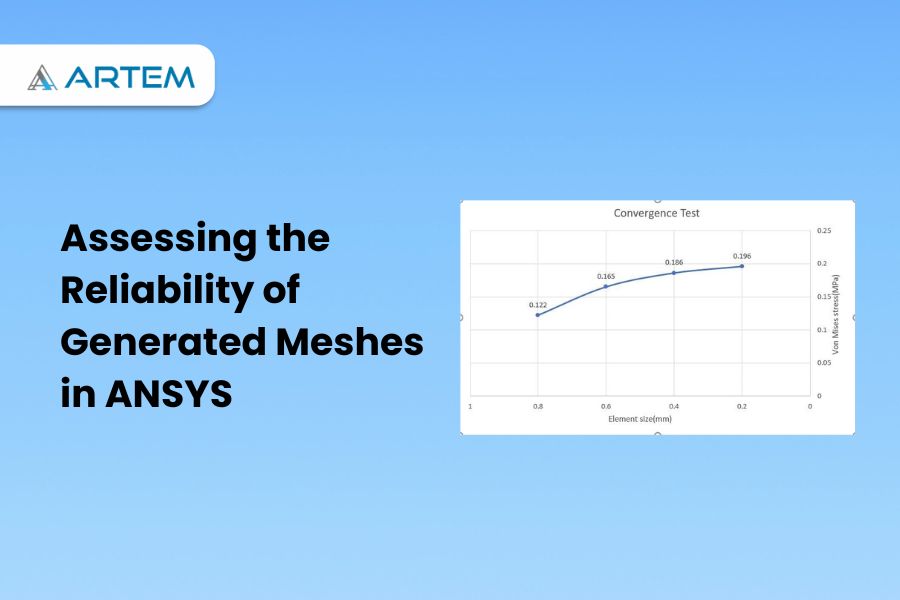Assessing the Reliability of Generated Meshes in ANSYS
How can we understand that the mesh generated in ANSYS is reliable or not?
The evaluation of a mesh generated in ANSYS or any other finite element analysis (FEA) software is a crucial step in ensuring the accuracy and significance of the results.
Here are some factors to consider when assessing the reliability of a mesh:
Mesh Quality Metrics:
When assessing the reliability of a mesh in ANSYS or any other FEA software, various mesh quality metrics can be used to evaluate the quality of the elements. Here are some common mesh quality metrics that can be considered:
-
- Aspect Ratio: Aspect ratio measures the elongation or distortion of an element. It is calculated by dividing the longest edge of an element by the shortest edge. A high aspect ratio indicates elongated or stretched elements, which can lead to inaccurate results.
- Skewness: Skewness quantifies the deviation of an element from an ideal shape, typically an equilateral triangle (in 2D) or a regular tetrahedron (in 3D). High skewness values indicate distorted or skewed elements, which can adversely affect the accuracy of the solution.
- Jacobian: Jacobian is a measure of the element’s deformation from its original shape. It calculates the volume change in an element during the deformation process. A low Jacobian value indicates significant deformation, which can lead to inaccurate results.
- Orthogonality: Orthogonality measures the angle between adjacent edges or faces of an element. Higher orthogonality implies more orthogonal or perpendicular elements, which are desirable for accurate simulations.
- Node Warping: Node warping measures the distortion of the nodes within an element. Excessive node warping can lead to inaccurate results and should be minimized.
These mesh quality metrics are generally available within ANSYS or can be calculated using post-processing tools. It’s important to consider these metrics collectively and aim for a mesh that exhibits good quality across multiple criteria. However, it’s worth noting that the importance of each metric may vary depending on the specific simulation and problem at hand.
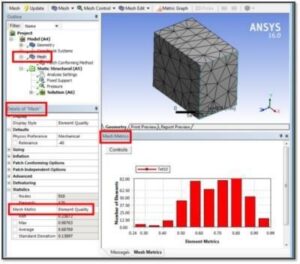
Convergence Studies:
Convergence studies in reliability analysis using ANSYS are essential to ensure accurate and reliable results. A convergence study involves systematically varying certain parameters, such as mesh size or number of iterations, and examining the corresponding changes in the results to determine the point at which further refinement does not significantly impact the outcome.
- The primary objective is to establish a level of confidence in the obtained results, ensuring that they are not unduly influenced by numerical errors or modeling assumptions.
- To conduct a convergence study, the analyst typically starts by defining an appropriate finite element model and specifying the necessary input parameters, such as material properties, loading conditions, and probabilistic distributions. Subsequently, the analysis is performed with a coarse mesh and a moderate number of iterations.
- The analyst then proceeds to systematically refine the mesh by increasing the number of elements or nodes and re-running the analysis. The obtained results are compared with those from the previous iteration, and the convergence behavior is evaluated. The process is repeated until a convergence criterion is met, indicating that further mesh refinement does not significantly alter the reliability metrics.
- Additionally, other factors, such as convergence with respect to the number of iterations or the level of discretization, may also be examined. The convergence study provides valuable insights into the sensitivity of the results to these parameters and aids in determining the appropriate level of refinement required for accurate reliability assessment.
In conclusion, convergence studies play a crucial role in ensuring the reliability and accuracy of the obtained results. By systematically varying parameters and observing the convergence behavior, analysts can establish the appropriate level of mesh refinement or other numerical considerations required for robust reliability assessments.
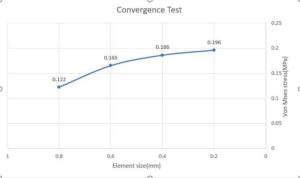
Solution Verification:
Solution verification is an important step, aimed at validating the accuracy of the numerical solution and ensuring that it aligns with the expected behavior of the system under study. It involves comparing the results obtained from the ANSYS analysis with known analytical solutions or experimental data, if available.
- To perform solution verification in ANSYS for reliability analysis, the analyst starts by selecting benchmark problems or cases for which analytical solutions exist. These benchmarks should possess similar characteristics and features as the system being analyzed. The analyst then sets up the ANSYS model and applies the same input parameters used in the analytical solutions.
- Once the ANSYS analysis is complete, the results are compared to the known analytical solutions. Discrepancies between the two sets of results are carefully examined and analyzed. If the differences are within acceptable limits, it indicates that the ANSYS model and analysis are accurate and can be relied upon for reliability assessment.
- In cases where analytical solutions are not available, the analyst may resort to experimental data. In such scenarios, the ANSYS results are compared to the experimental measurements, and the level of agreement is evaluated. Any significant deviations or discrepancies between the ANSYS predictions and the experimental data need to be investigated and addressed.
- Solution verification in ANSYS serves as a critical quality assurance step. It helps validate the accuracy and reliability of the numerical solution by comparing it with established benchmarks or experimental data. This process instills confidence in the ANSYS analysis and ensures that the obtained results can be trusted for making informed decisions regarding the reliability of the system under consideration.
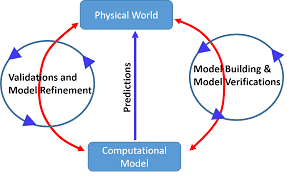
Mesh Sensitivity Analysis:
Performing a sensitivity analysis on the mesh can help determine the impact of mesh density on the results. By systematically refining or coarsening the mesh and observing the changes in the results, you can gain insights into the mesh’s reliability. The objective is to determine the appropriate level of mesh refinement necessary to obtain accurate and reliable results.
- To start with, the analyst starts by creating an initial finite element model with a certain mesh density. The model includes all the necessary input parameters, such as material properties, loading conditions, and probabilistic distributions. The analysis is then performed to obtain the reliability metrics, such as failure probabilities or safety factors.
- Next, the analyst systematically varies the mesh density by refining or coarsening the mesh and re-performing the analysis. The obtained reliability metrics are compared with those from the previous mesh to evaluate the sensitivity of the results to the mesh density. The goal is to identify the point at which further mesh refinement does not significantly alter the reliability metrics, indicating convergence.
- During the sensitivity analysis, the analyst assesses different aspects of the mesh, such as element size, aspect ratio, and element type. The impact of these mesh characteristics on the reliability metrics is carefully analyzed. It is important to strike a balance between having a sufficiently fine mesh to capture the critical features of the system and avoiding excessive computational costs.
- The results of the mesh sensitivity analysis guide the analyst in determining the optimal mesh density for reliable reliability assessment. It provides insights into the level of mesh refinement required to obtain accurate results while balancing computational efficiency. The analysis helps ensure that the computed reliability metrics are not unduly influenced by the discretization error associated with the mesh and improves the overall confidence in the analysis outcomes.
In summary, mesh sensitivity analysis in ANSYS for reliability assessment involves systematically varying the mesh density and examining the corresponding changes in the computed reliability metrics. It helps determine the appropriate level of mesh refinement necessary to achieve accurate and reliable results while considering computational efficiency.

Physical Reasonability:
Physical reasonability is a critical aspect of reliability analysis in ANSYS, as it ensures that the obtained results align with the fundamental principles and characteristics of the physical system being analyzed. It involves assessing whether the computed reliability metrics and associated outcomes make sense from a physical standpoint.
- In ANSYS, physical reasonability is evaluated by examining the relationships between the input parameters, system behavior, and reliability metrics. It involves verifying that the computed failure probabilities or safety factors are consistent with the expected behavior of the system under study.
- To assess physical reasonability, the analyst starts by carefully defining and validating the input parameters, such as material properties, boundary conditions, and loading conditions. These parameters should accurately represent the physical system and be based on sound engineering principles or empirical data.
- Once the ANSYS analysis is complete, the obtained reliability metrics are scrutinized. The analyst compares the results with their understanding of the system’s behavior and expectations based on engineering knowledge. Any discrepancies, unexpected trends, or extreme values are carefully examined to ensure that they are not a result of modeling errors, numerical instabilities, or inappropriate assumptions.
- Physical reasonability also involves evaluating the sensitivity of the reliability metrics to variations in the input parameters. Sensitivity analyses help identify how changes in factors such as material properties, loading conditions, or boundary conditions affect the reliability outcomes. Inconsistencies or unexpected sensitivities may indicate modeling or analysis issues that need to be addressed.
- The validation of the reliability metrics against physical reasonability is crucial to have confidence in the analysis results. It ensures that the computed failure probabilities or safety factors are realistic and reflect the actual behavior of the system. Physical reasonability enhances the credibility of the reliability analysis and enables engineers to make informed decisions based on accurate and meaningful results.
In conclusion, physical reasonability in reliability analysis using ANSYS involves assessing whether the computed reliability metrics align with the expected behavior of the physical system. It entails validating input parameters, scrutinizing results for consistency with engineering knowledge, and evaluating sensitivities to variations in parameters. By ensuring physical reasonability, analysts can trust the reliability outcomes and make reliable decisions regarding the system’s performance and reliability.
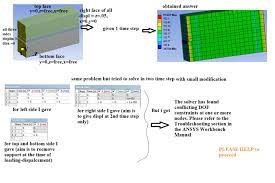
Expert Review:
Seek the expertise of experienced analysts or domain experts to review your mesh. They can provide valuable insights and identify potential issues or areas for improvement that you might have overlooked.
- During the expert review process, a panel of experts with relevant domain knowledge and expertise examines the ANSYS model, input parameters, and analysis methods employed in the reliability analysis. They assess the appropriateness of the chosen modeling techniques, the accuracy of the input data, and the suitability of the applied numerical methods for the specific problem at hand.
- The experts review the assumptions made in the analysis, verify the consistency of the modeling approach with established engineering principles, and evaluate the adherence to industry standards and guidelines. They may also provide insights into alternative approaches or suggest improvements to enhance the reliability analysis.
- Additionally, the expert review involves examining the computed reliability metrics, such as failure probabilities, safety factors, or reliability indices. The panel evaluates the reasonableness and significance of the obtained results, comparing them with their expertise and experience in the field. They scrutinize the outcomes for potential limitations, biases, or inconsistencies that may require further investigation or refinement.
- The feedback and recommendations provided by the subject matter experts are valuable in improving the overall reliability analysis process. Their review helps identify any overlooked aspects, potential errors, or areas for improvement. It ensures that the analysis is robust, accurate, and in line with industry best practices.
- Expert review is particularly important in critical applications where the reliability of a system is of utmost importance, such as aerospace, automotive, or structural engineering. By leveraging the expertise of knowledgeable professionals, the reliability analysis in ANSYS can be strengthened, instilling confidence in the obtained results and enabling informed decision-making based on reliable information.
In conclusion, expert review in reliability analysis using ANSYS involves the evaluation and validation of the analysis process, methodologies, and results by subject matter experts. Their expertise helps ensure the appropriateness of modeling techniques, accuracy of input parameters, and adherence to engineering principles and standards. The expert review enhances the reliability analysis and provides an additional level of assurance for making critical decisions.
When it comes to FEA simulation, ensuring mesh reliability is essential. To achieve accurate and reliable results, it is highly recommended to dedicate time and effort towards refining and validating the mesh. Enhance your skills in this area by enrolling in the ANSYS course in India offered by Artem Academy. Accessible online, this course will provide you with the knowledge and techniques necessary to create trustworthy and precise simulations.

